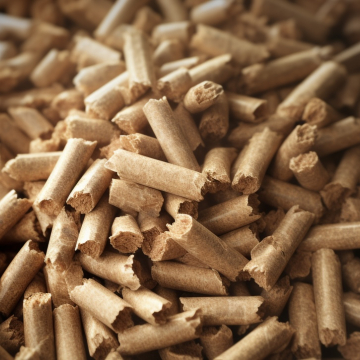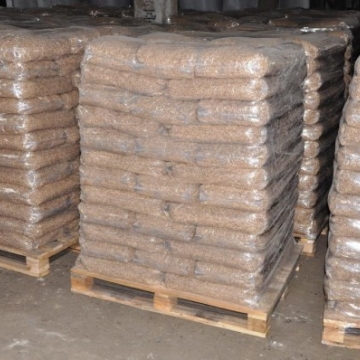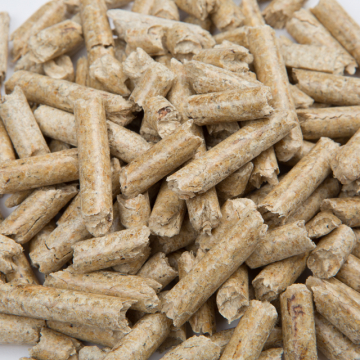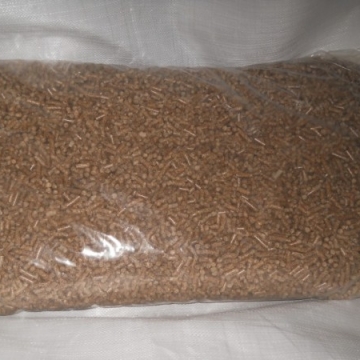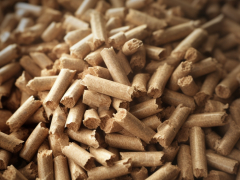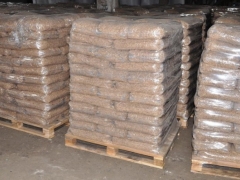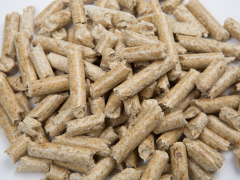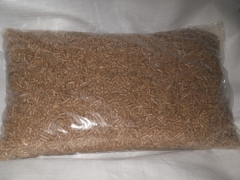EN Plus wood pellets
Pellets of quality standard EN Plus
Premium quality wood pellets are certified by ENplus scheme. It is a quality assurance scheme that applies to both pellet manufacturers and distributors. This scheme provides an international recognized framework that puts quality at the heart of the production and distribution process. There are 3 wood pellet quality classes: ENplusA1, ENplusA2, ENplusB. ENplusA1 is the most commonly used class, whereas ENplusB class is practically never used. In order to receive ENplus accreditation, the company must be audited by the accredited Inspection Body and, if successful, a chosen Certification body will issue a certificate. The company may choose the following Inspection and Certification Bodies: AENOR International, SGS, Control Union Certifications Germany, TUV Nord, Holzforschung Austria, etc. If a trader/distributor has no physical contact to pellets and not contracting any service providers, then receiving this certificate is not mandatory and only on voluntary basis.
According to ENplus wood pellet specification, pellets used for domestic heating purposes must have ash content below 0,7% (A1 quality), mechanical durability minimum 98% and fines content (number of particles below 3,15 mm) max 1% when loading on to a vessel, or max 0.5% when bagging. Low ash content prevents household ovens from slacking and accumulating a lot of ash. Whereas low fines content indicates a good durability of pellets that is necessary for handling processes such as bagging, loading, transporting, and will guarantee to the end users a very low dust content in bags. In reality, mechanical durability of premium quality wood pellets often reaches min 99%.
|
Property |
Unit |
ENplus A1 |
ENplus A2 |
ENplus B |
|
Diameter |
mm |
6 ± 1 or 8 ± 1 |
||
|
Length |
mm |
3,15 < L ≤ 40 |
||
|
Moisture |
w-% |
≤ 10 |
||
|
Ash |
w-% |
≤ 0,7 |
≤ 1,2 |
≤ 2,0 |
|
Mechanical Durability |
w-% |
≥ 98,0 |
≥ 97,5 |
|
|
Fines (< 3,15 mm) |
w-% |
≤ 1,0 ≤ 0,5 |
||
|
Temperature of pellets |
°C |
≤ 40 |
||
|
Net Calorific Value |
kWh/kg |
≥ 4,6 |
||
|
Bulk Density |
kg/m3 |
600≤BD≤ 750 |
||
|
Additives |
w-% |
≤ 2 |
||
|
Nitrogen |
w-% |
≤ 0,3 |
≤ 0,5 |
≤ 1,0 |
|
Sulfur |
w-% |
≤ 0,04 |
≤ 0,05 |
|
|
Chlorine |
w-% |
≤ 0,02 |
≤0,03 |
|
|
Ash Deformation Temperature* |
oC |
≥ 1200 |
≥ 1100 |
|
|
Arsenic |
mg/kg |
≤1 |
||
|
Cadmium |
mg/kg |
≤ 0,5 |
||
|
Chromium |
mg/kg |
≤10 |
||
|
Copper |
mg/kg |
≤10 |
||
|
Lead |
mg/kg |
≤10 |
||
|
Mercury |
mg/kg |
≤ 0,1 |
||
|
Nickel |
mg/kg |
≤10 |
||
|
Zinc |
mg/kg |
≤100 |
||
ENplus pellets for domestic use are usually delivered in 15 kg bags placed on the wooden pallets. In this case they may be transported only by lorries directly from the production plant to the retailers. Pellets may also be in bags on the wooden pallets loaded into the sea container. They can also be transported in containers in big bags or even in bulk. Some big distributors of EN Plus pellets have been accepting deliveries of the pellets in bulk by sea vessels for some time now. In this case pellets are bagged in the country of destination. A lot of discussion has been around the color of the pellets. Many Italian buyers prefer white pellets. But this is rather an esthetical matter. Color of the pellets depends on the tree species, which they are produced from and does not influence their quality. Pellets made of pine have yellowish or brownish color. Adding of spruce and aspen give the pellets a lighter hue, admixture of alder tree will make the color of pellets much darker. Also, the factor influencing the color of the pellets is the dryer. In a case the raw material for pellets is coming from the sawmills with already dried saw logs and the material not being placed onto the drum dryer, the color of the pellets will be lighter. Passing through the dryer, where the temperature is over 400 degr C will make the pellets darker. Especially, when the pellets are produced in winter and the dryers are working with higher temperatures and raw material is kept in the dryer for a longer period of time. Lately, strictly white pellets have become less important. But there are certainly buyers who still insist on “white virgin” pellets.


